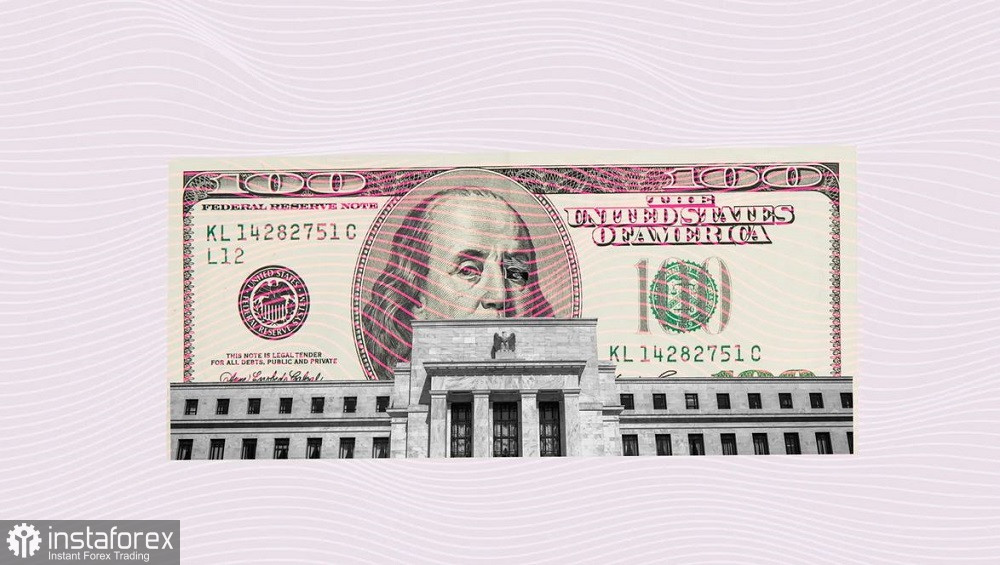Following the December meeting of the Federal Reserve, the dollar found itself in a deep knockout. The American regulator unexpectedly implemented a dovish scenario, while most market participants expected a moderately hawkish stance from the central bank. The markets reacted to yesterday's event accordingly: the U.S. Dollar Index updated a four-month low, dropping to the base of the 102 figure, the yield on 10-year Treasuries hit an almost 5-month low (3.95%), and the EUR/USD pair reached a two-week high, hovering around the 1.09 figure.
So, what happened? In short, the Federal Reserve stopped playing along with the hawks and began discussing the strategy of easing monetary policy in 2024. One could say the regulator changed its tune: in previous meetings, the central bank voiced the same phrase, essentially stating that the Fed is ready to keep the rate at the current level for an extended period and may raise it additionally if necessary. Now, according to Fed Chairman Jerome Powell, the regulator is focused on avoiding a mistake by keeping rates too high for too long, considering expectations of economic growth slowdown and "real progress" in combating inflation.

During the final press conference, Powell acknowledged that Federal Reserve members have begun discussing when it would be appropriate to start lowering the interest rate. Previously, this topic was considered a "taboo"—answering corresponding questions, the head of the Federal Reserve said it was not yet time to talk about easing monetary policy since inflation is still far from the target level.
However, recent inflation reports, including the November Consumer Price Index (CPI), reflected further inflation deceleration, bringing it closer to the coveted two-percent level. According to Powell, many committee members spoke about their rate forecasts during the Fed meeting, and as a result of this discussion, "the impression emerged that a rate cut would become a topic for future conversations."
Recall that Fed Governor Christopher Waller first broached the topic of easing monetary policy back in November, stating that the regulator would have to put this issue on the agenda if inflation continued to decline ("two to three to four months"). Waller is known for his hawkish stance, so such a statement exerted significant pressure on the greenback. However, Non-Farm Payrolls were subsequently published, boosting dollar bulls' confidence, as almost all components of the release were in the "green zone" (unemployment rate reduction to 3.7% and an increase in the number of employed by 199,000). Therefore, in the lead-up to the December meeting, the market was not certain that the regulator would implement a dovish scenario and begin discussing rate cut prospects.
The market made a mistake. The Federal Reserve ignored the "green tint" of November Non-Farms (largely due to the resolution of strikes in the industrial sector and among Hollywood actors) and focused on inflation, where a clear downward trend is evident. The Consumer Price Index, wages, the Producer Price Index, the core PCE index, and the import price index—all these indicators in October–November entered the "red zone" (or at the forecast level). At the same time, the ISM manufacturing index also had a red tint, indicating troubling trends.
In the accompanying statement, the regulator pointed out that economic activity growth has slowed compared to the high rates in the third quarter, "as indicated by recent macroeconomic data." Regarding the labor market situation, the central bank noted that job growth has become more moderate compared to the beginning of the year, "but remains strong," and the unemployment rate remains low. Meanwhile, inflation over the past year has "significantly weakened."
The updated dot plot also reflected a dovish sentiment among members of the American regulator. Thus, according to the majority of Fed members, the rate will be lowered by 75 basis points next year. However, experts expected to see prospects for a 50-point reduction on the chart. Officials also expect the rate to decline even more significantly to 3.75% in 2025.
In other words, the Federal Reserve has ceased to be an ally of the greenback, as it has fundamentally changed the tone of its rhetoric. Essentially, the regulator has outlined the main theme of 2024: easing monetary policy. Now, in the expert community, discussions will revolve around the timing, pace, and scale of the interest rate reduction.
According to the CME FedWatch Tool, the probability of a 25-point rate cut in March has increased to 72%. At the same time, the probability of a 50-point rate cut at the May meeting is currently 70%.
Obviously, in such conditions, the dollar's fundamental nature will be under significant pressure, including against the euro. Thus, buyers of EUR/USD confidently surpassed the support level of 1.0880 (the middle line of the Bollinger Bands indicator on the daily chart) and are currently between the middle and upper lines of the Bollinger Bands, as well as above all lines of the Ichimoku indicator, which formed a bullish "Parade of Lines" signal. All of this indicates the strength of the upward movement. The target of the upward move is the level of 1.1010—the upper line of the Bollinger Bands on the same timeframe.
 English
English 
 Русский
Русский Bahasa Indonesia
Bahasa Indonesia Bahasa Malay
Bahasa Malay ไทย
ไทย Español
Español Deutsch
Deutsch Български
Български Français
Français Tiếng Việt
Tiếng Việt 中文
中文 বাংলা
বাংলা हिन्दी
हिन्दी Čeština
Čeština Українська
Українська Română
Română

